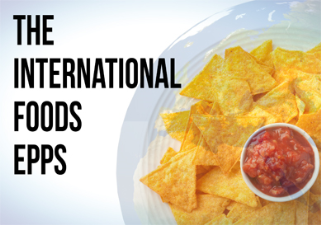Six Tips for Success at the International Foods EPPS 7/20/2016
Global sourcing can be very challenging for buyers, so for international suppliers engaging with them, there are many issues to take into consideration. To make the most from your 10- and 20-minute meetings at ECRM’s International Foods EPPS, it’s important to narrow your focus to those few key areas of importance that will provide buyers with enough information to land a follow up call.
Here are some tips on how to best prepare for your upcoming meetings:
- Be well informed about the buyers on your schedule and the organization he/she represents. What are their strategic priorities? Who are their major competitors? What is their customer base? Then customize your product pitch to this information.
- Learn some strategic key words for the buyer’s organization (or for their customers) and use them while introducing your product. It creates bonding and association. This is especially true for representatives of larger retail organizations that are typically driven by corporate culture.
- Know your strengths. Be well prepared to get right to the point about few key characteristics of your product that stand out and are important to each buyer’s customers. This is a key point that they will remember.
- Don’t try to push too many products! Suppliers often try and pitch too many products during a meeting. This can be confusing, and it indicates a lack of focus and very often generates natural resistance. Be simple, concise, to the point. Don’t become somebody who just wants to get something sold, no matter what! Relevancy is key – pitch only those products that are relevant based on your knowledge of the retailer and its customers.
- Avoid changing the course of your product presentation strategy during the meeting. Strong prep work before the meeting should help reduce the chances of not meeting the buyer’s expectations.
- Follow Up! Those suppliers who experience the most success at EPPS meetings are those who execute strong follow ups. Exchanging contacts for sending samples to the buyer of the presented products is always a good follow up strategy. Follow ups are also where you can suggest sending samples of additional products you may not have covered during the meetings.


Ivo Petroff has 12 years of experience with leading retailers from EU and North America, for which he managed strategic buying across various grocery categories. He helped drive new market entries for 3 large retailers: 2004 Kaufland in South-Eastern Europe (2004), Target in Canada (2012), and Lidl in the US (2015). Follow his blog on transatlantic free trade: http://petroffreflections.blogspot.ca/